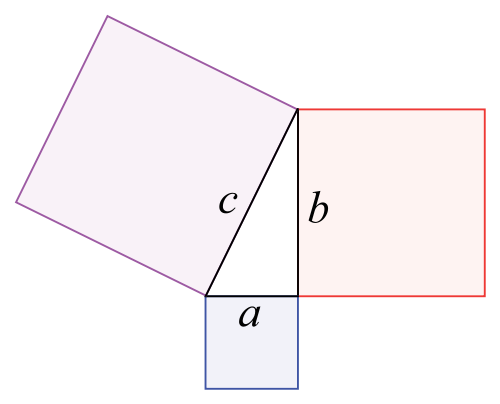
Irrationality of the square root of 2: [$\sqrt{2} \neq \frac{p}{q}$] for whole numbers $p,q$.
5th Century!
How many stones do you need to build a road that goes from Forest Hill School to Bloor and Spadina? to Edmonton?
Humans went to the moon! Where next?
Melting Ice
Nuclear test operations at Bikini Atoll
An outreach lecture by James Colliander
Slope of a curve as a limit of slopes of secant lines converging to tangent line
Secant Lines Limit onto Tangent Line
This idea leads us to define the slope of a curve as a limit of difference quotients:
$$ f' (x) = \frac{df}{dx}(x) = \lim_{h\rightarrow 0} \frac{f(x+h) - f(x)}{(x+h) - x}.$$
Area Under a Curve as a Limit of Area of Fine Approximations by Rectangles
Fundamental Theorem of Calculus
This idea gives us a trick to often "add up" all the rectangles. Some chunk of the calculus class toolbox is learning different versions of applying this trick.
Smooth Structure on Small Scales
Calculus: A Toolbox for studying objects which behave nicely enough on small scales.
Exploded View of Calculus Topics
Gottfried Leibniz
Isaac Newton
Isaac Newton is the most influential scientist ever. He lived 84 years from 1643 to 1727.
Newton was the greatest genius who ever lived, and once added that he was also “the most fortunate, for we cannot find more than once a system of the world to establish.
Newton was rather more modest. In a letter to Robert Hooke, he wrote:
If I have seen further it is by standing on the shoulders of Giants.
(Though some historians think the above quote was an attack on Hooke who was short and hunchbacked, rather than or in addition to a statement of modesty.)
Another Newton quote:
I do not know what I may appear to the world, but to myself I seem to have been only like a boy playing on the sea-shore, and diverting myself in now and then finding a smoother pebble or a prettier shell than ordinary, whilst the great ocean of truth lay all undiscovered before me.
A ranking of the most influential human beings in history.
Hart's Top 10 (from the 1992 edition)
Historically Influential Careers:
Brahe's body was recently exhumed.
Kepler's Cosmological Theory (Mysterium Cosmographicum)
Kepler's first and second law
Remarks:
Every point mass attracts every single other point mass by a force pointing along the line intersecting both points. The force is directly proportional to the product of the two masses and inversely proportional to the square of the distance between the point masses: $$ F = G \frac{m_1 m_2}{r^2}, $$ where:
Newton showed (and we could do it together with some preparatory work) that Kepler’s laws emerge as consequences of his universal law of gravitation.
The star S2 orbiting the black hole at the center of the Milky Way.
A more recent application of these ideas involves the orbit of stars around the galactic center of the Milky Way.
Given for one instant an intelligence which could comprehend all the forces by which nature is animated and the respective positions of the beings which compose it, if moreover this intelligence were vast enough to submit these data to analysis, it would embrace in the same formula both the movements of the largest bodies in the universe and those of the lightest atom; to it nothing would be uncertain, and the future as the past would be present to its eyes. --Pierre-Simon Laplace
This is such a satisfying, but rather predictable, viewpoint on the dynamics of the universe. It turned out to be hubris.
Mathematicians studying Dynamical Systems theory (e.g. Henri Poincaré) showed there are problems that have intrinsic unpredictability despite being completely deterministic! Chaos Theory
Newton's law of universal gravitation is inconsistent with the constancy of the speed of light.
Thought experiment: Move a distant planet, Newton's law forecasts instantaneous change of associated gravitational force.
But experiments have shown that light speed is constant. Nothing propagates faster than the speed of light including the force information indicating that a planet has moved.
These observations motivated the development of General Relativity by Albert Einstein
Moral: Mathematics has historically been a factory for cleverness. Therefore, you should study it.